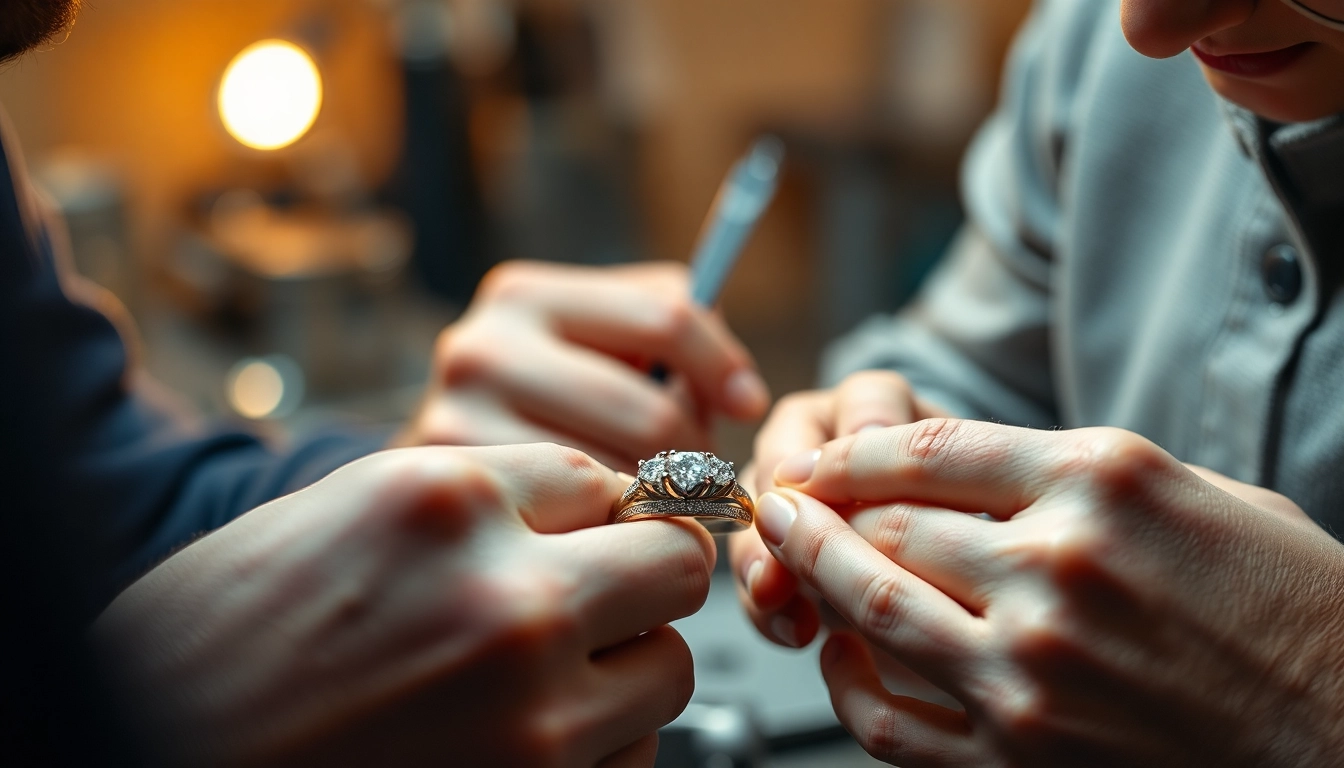Introduction to Engagement Ring Production: Crafting Symbols of Love and Eternity
Creating an engagement ring is a meticulous and artful process that combines timeless craftsmanship with modern technological innovations. This production process transforms raw materials into stunning symbols of love, representing lifelong commitment and personal style. At the core of engagement ring production lies the careful selection of materials, precise craftsmanship, and the implementation of advanced technologies that ensure each piece meets the highest standards of quality and durability.
Understanding engagement ring production involves exploring its historical evolution, material choices, manufacturing steps, technological advancements, quality assurance practices, and future trend integration. This comprehensive overview aims to shed light on how master jewelers and modern artisans craft these treasured symbols, combining tradition with innovation to create unique, lasting heirlooms.
History and Evolution of Ring Crafting Techniques
Historically, the craft of engagement ring production has evolved significantly, from primitive settings to highly sophisticated designs. Ancient civilizations, such as the Egyptians and Romans, utilized rudimentary metalworking methods, often setting uncut gemstones into simple bands. Over centuries, artisans refined their techniques, introducing intricate metalwork, symbolic motifs, and the first setting of cut gemstones.
The Renaissance period marked a turning point with increased emphasis on symmetry, detailed engraving, and the introduction of diamonds as premier gemstones. Techniques such as hand setting and embossing were perfected, laying the foundation for modern jewelry craftsmanship. By the 20th century, industrial automation and technological innovation revolutionized ring production — enabling mass manufacturing without sacrificing quality.
Today’s evolution integrates traditional craftsmanship with cutting-edge technologies like CAD (Computer-Aided Design) and laser welding, allowing for unparalleled precision, customization, and durability. This fusion of past and present ensures every engagement ring carries both historic significance and modern excellence.
Materials and Metals Used in Engagement Ring Making
The choice of materials and metals crucially influences the aesthetic, durability, and value of engagement rings. Commonly used metals include:
- Gold: Available in 14K (585) and 18K (750) purity, gold is favored for its malleability, beauty, and wide color palette — yellow, white, and rose gold. Its affordability and ease of customization make it a perennial favorite.
- Platinum: Known for its strength and hypoallergenic properties, platinum (950 purity) offers a naturally white hue and high durability, ensuring the ring maintains its beauty over time.
- Silver: Less common for engagement rings due to lower durability, silver still finds niche use in custom or vintage-inspired pieces.
- Titanium and Palladium: Modern, lightweight metals offering excellent strength, often used in contemporary designs.
The choice of alloy, purity, and metal quality affects the overall integrity and appearance of the ring. For instance, higher purity gold (18K) contains more pure gold than 14K, which contributes to a richer color and higher value, yet slightly less durable. Manufacturers also consider hypoallergenic metals especially for sensitive clients.
Types of Gemstones and Their Integration in Ring Production
Gemstones elevate the aesthetic appeal and symbolize the unique story behind each engagement ring. The selection process involves understanding different gemstone types, their characteristics, and appropriate settings.
Diamonds
As the most traditional choice, diamonds symbolize durability and eternity. They are graded based on the “4 Cs”: cut, color, clarity, and carat weight. Excellent certifications, like GIA or IGI, guarantee quality and authenticity.
Colored Gemstones
Spalva, akin to sapphires, rubies, emeralds, or inspired choices like lab-grown diamonds, allows for personalized expressions. These stones often carry symbolic meanings — emeralds for love, sapphires for wisdom, rubies for passion.
Integration Methods
Proper integration of gemstones requires selecting compatible settings such as prong, bezel, or pave, tailored to the specific stone’s size and shape. Advances in CAD and laser technology facilitate secure, precise placement, ensuring resilience and maximizing visual impact.
Step-by-Step Guide to Engagement Ring Manufacturing
Designing and Conceptualizing Custom Engagement Rings
The process begins with client consultations, mood boards, sketches, and CAD simulations. Modern design tools enable visualization in 3D, allowing clients to preview their bespoke ring before production. This stage emphasizes personal style, symbolisms, and budget considerations.
Precise Metal Shaping and Setting Processes
Once the design is finalized, artisans shape the metal, employing rolling, casting, or forging techniques. The metal is then finely detailed through hand and machine processes. Gemstones are carefully set using modern tools — laser-assisted setting ensures precision, strength, and minimal stress on stones.
Quality Control and Final Inspection Measures
Each ring undergoes rigorous inspections — checking for structural integrity, perfect gemstone setting, surface smoothness, and adherence to design. Certifications for gemstones, meticulous polishing, and final quality tests ensure the piece meets all durability and aesthetic standards.
Advanced Technologies in Engagement Ring Production
3D Modeling and Digital Prototyping for Precision
CAD technology allows creation of detailed virtual models, enabling designers to refine details and ensure perfect fit and proportions. Digital prototypes reduce errors and facilitate client approvals before physical production begins.
Laser Welding and Automated Assembly Techniques
Laser welding provides seamless joins and highly accurate assembly, critical for delicate settings. Automation enhances efficiency, consistency, and quality, especially in mass production of intricate designs.
Innovations Improving Durability and Aesthetics
New alloy formulations, anti- Tarnishing coatings, and laser-milled surface textures contribute to longevity and aesthetic appeal. AI-driven quality control systems monitor each stage, flagging anomalies early for corrective action.
Best Practices for Ensuring Top-Quality Engagement Rings
Choosing Certified Gemstones and Metals
Only utilizing certified stones guarantees the buyer’s confidence in quality, provenance, and value. Certified metals indicate purity standards and adherence to ethical sourcing, thus maintaining high standards throughout production.
Managing Client Expectations and Customization
Clear communication, expert guidance on design feasibility, and transparent pricing help manage expectations. Customization involves balancing client desires with technical constraints, ensuring a harmonious final product.
Post-Production Care and Maintenance Tips
Proper cleaning, regular inspections, and professional servicing prolong the beauty and integrity of engagement rings. Educating clients on care routines, including avoiding harsh chemicals and physical shocks, maintains their investment’s durability.
Measuring Performance and Success in Ring Production
Key Metrics for Quality and Customer Satisfaction
Metrics include defect rates, customer feedback, repeat orders, and certification standards compliance. Monitoring these gauges helps optimize production processes and elevate customer experience.
Integrating Feedback for Continuous Improvement
Feedback collection through surveys, reviews, and direct communication fuels iterative improvements — from material sourcing to design finalization — fostering innovation and market competitiveness.
Market Trends Shaping Future Engagement Ring Designs
Emerging trends involve eco-friendly materials, lab-grown diamonds, minimalist aesthetics, and personalized engravings. Incorporating customer preferences and new innovations will dominate future production strategies, ensuring relevance and excellence.









